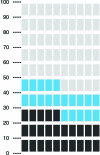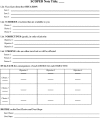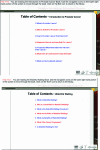Shared decision making in oncology practice: what do oncologists need to know?
- PMID: 22234632
- PMCID: PMC3267829
- DOI: 10.1634/theoncologist.2011-0261
Shared decision making in oncology practice: what do oncologists need to know?
Abstract
Background: There is growing interest by patients, policy makers, and clinicians in shared decision making (SDM) as a means to involve patients in health decisions and translate evidence into clinical practice. However, few clinicians feel optimally trained to implement SDM in practice, and many patients report that they are less involved than they desire to be in their cancer care decisions. SDM might help address the wide practice variation reported for many preference-sensitive decisions by incorporating patient preferences into decision discussions.
Methods: This paper provides a perspective on how to incorporate SDM into routine oncology practice to facilitate patient-centered communication and promote effective treatment decisions. Oncology practice is uniquely positioned to lead the adoption of SDM because of the vast number of preference-sensitive decisions in which SDM can enhance the clinical encounter.
Results: Clinicians can facilitate cancer decision making by: (a) determining the situations in which SDM is critical; (b) acknowledging the decision to a patient; (c) describing the available options, including the risks, benefits, and uncertainty associated with options; (d) eliciting patients' preferences; and (e) agreeing on a plan for the next steps in the decision-making process.
Conclusion: Given recent policy movements toward incorporating SDM and translating evidence into routine clinical practice, oncologists are likely to continue expanding their use of SDM and will have to confront the challenges of incorporating SDM into their clinical workflow. More research is needed to explore ways to overcome these challenges such that both quality evidence and patient preferences are appropriately translated and incorporated into oncology care decisions.
Conflict of interest statement
Section Editors
Reviewers “A” and “B”: None.
Figures



References
-
- Charles C, Gafni A, Whelan T. Shared decision-making in the medical encounter: What does it mean? (or it takes at least two to tango) Soc Sci Med. 1997;44:681–692. - PubMed
-
- O'Connor AM, Bennett CL, Stacey D, et al. Decision aids for people facing health treatment or screening decisions. Cochrane Database Syst Rev. 2009;(3):CD001431. - PubMed
-
- Breslin M, Mullan RJ, Montori VM. The design of a decision aid about diabetes medications for use during the consultation with patients with type 2 diabetes. Pat Educ Couns. 2008;73:465–472. - PubMed
-
- Politi MC, Street RL. The importance of communication in collaborative decision making: Facilitating shared mind and the management of uncertainty. J Eval Clin Pract. 2011;17:579–584. - PubMed
-
- O'Connor AM, Drake ER, Fiset V, et al. The Ottawa patient decision aids. Eff Clin Pract. 1999;2:163–170. - PubMed
Publication types
MeSH terms
LinkOut - more resources
Full Text Sources

